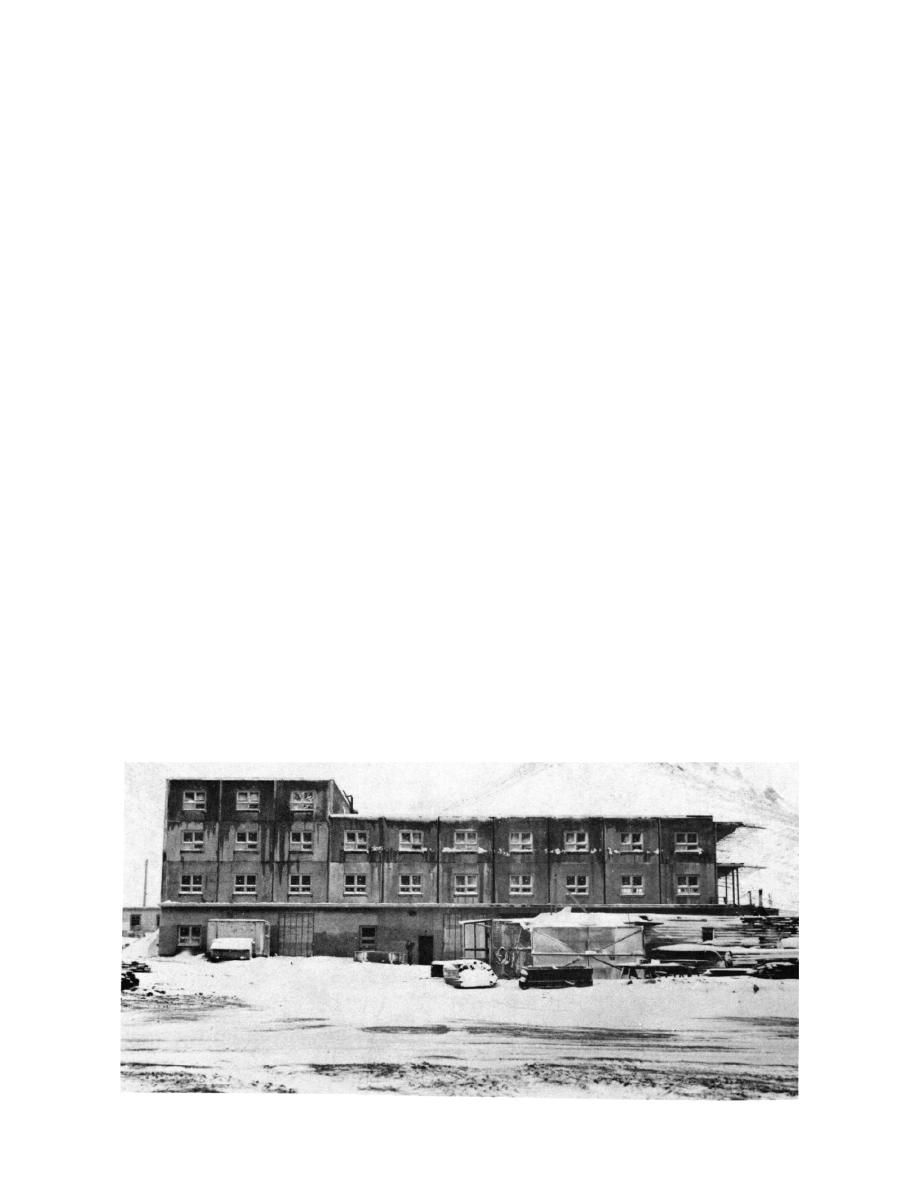
TM 5-852-9/AFR 88-19, Vol. IX
entire facility by fire, and the number of potential fire sources, dictate higher fire protection requirements and
additional safety measures. A composite structure generally contains fewer roof and wall penetrations than
do separate buildings, thus reducing the maintenance associated with snow infiltration, leaks, and vent icing.
Utility systems often cost less initially, are less likely to freeze or be damaged by differential settlement, and
are easier to operate and maintain. The multistory vertical construction achievable with composite buildings
can reduce risks for two high cost, high problem areas: roofs and foundations. Since individual site
requirements mandate different combinations of functions and needs, a standard design is usually not available
for the composite building, necessitating a greater design effort. High noise and hazard areas should be
isolated from offices and quarters. Generators should be as far from residential areas as possible, and
exhausted on the downwind side of the facility. Downwind direction may vary with the weather and time of
year, but is especially critical during the winter storms when the exhaust could infiltrate the building. Exhaust
location, therefore, should be planned with the winter storm season in mind. Composite structures make
rearrangement of existing functional areas, expansion of functions, or addition of new functions difficult. Two
separate but connected buildings should be considered to allow residential areas to be isolated from power
generation and equipment maintenance areas to reduce noise and petroleum odor impacts on personnel and
to provide shelter in case of fire in one structure. All support and utility systems should be redundant to
assure mission accomplishment and safety. A composite building is shown in figure 1-2.
d. Building operation during replacement. Space shortage and/or operational need may result in a
requirement that facilities and buildings being replaced remain in operation during construction. As the
replacement structure is frequently adjacent to existing facilities, the Contractor's activities and scope of
operations are restricted by this requirement. Detailed planning, scheduling, and coordinating become very
important.
Figure 1-2. Tin City Air Force Station Composite Building.
1-3


 Previous Page
Previous Page
